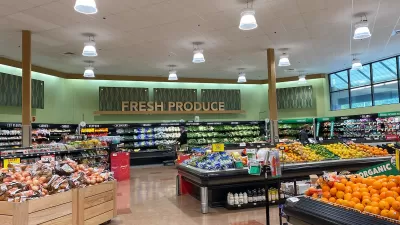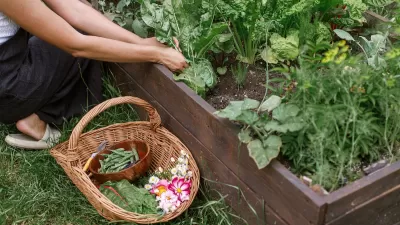A map of Pittsburgh's food deserts illustrates a nationwide problem with food insecurity.

Access to food and the role it can play in a person's life is an absolute vehicle for transformation and integration,” says Christina French, publisher of Table magazine.
In a country of agricultural bounty, it can be difficult to understand how so many people can lack for food. But 15 million American children are food-insecure. In Pittsburgh, 47 percent of the city reportedly lives in one of many food deserts. The problem becomes even more dire when we break down what constitutes "food." In many neighborhoods, the only source of "food" within walking distance is the corner store, markets that typically sell packaged junk food, sodas, and beer.
Reporting for the Pittsburgh Post-Gazette, Melissa McCart offers an explanation for how food desserts have come to be. High labor costs, economic downturn, and competition from big-box superstores such as Walmart have caused many grocery stores to close and consolidate. Residents of affected neighborhoods report travelling more than an hour by bus to reach a proper grocery store. Some of these neighborhoods, such as Oakland, home to the University of Pittsburgh, have streets filled with restaurants and bars, but such options are neither healthy nor affordable.
"Pittsburgh groups have been ramping up their efforts to address food insecurity, with varying degrees of success," reports McCart. Food pantries are expanding as well as focusing more on nutritional education. The Just Harvest program provides credits for EBT users to buy produce at farmers markets. Grow Pittsburgh is initiating community garden projects. Youth Places teaches food literacy to young restaurant workers.
"When people are hungry, the city suffers," McCart points out. "Charities have more to do."
FULL STORY: Food Deserts

Alabama: Trump Terminates Settlements for Black Communities Harmed By Raw Sewage
Trump deemed the landmark civil rights agreement “illegal DEI and environmental justice policy.”

Planetizen Federal Action Tracker
A weekly monitor of how Trump’s orders and actions are impacting planners and planning in America.

The 120 Year Old Tiny Home Villages That Sheltered San Francisco’s Earthquake Refugees
More than a century ago, San Francisco mobilized to house thousands of residents displaced by the 1906 earthquake. Could their strategy offer a model for the present?

Ken Jennings Launches Transit Web Series
The Jeopardy champ wants you to ride public transit.

BLM To Rescind Public Lands Rule
The change will downgrade conservation, once again putting federal land at risk for mining and other extractive uses.

Indy Neighborhood Group Builds Temporary Multi-Use Path
Community members, aided in part by funding from the city, repurposed a vehicle lane to create a protected bike and pedestrian path for the summer season.
Urban Design for Planners 1: Software Tools
This six-course series explores essential urban design concepts using open source software and equips planners with the tools they need to participate fully in the urban design process.
Planning for Universal Design
Learn the tools for implementing Universal Design in planning regulations.
Clanton & Associates, Inc.
Jessamine County Fiscal Court
Institute for Housing and Urban Development Studies (IHS)
City of Grandview
Harvard GSD Executive Education
Toledo-Lucas County Plan Commissions
Salt Lake City
NYU Wagner Graduate School of Public Service





























